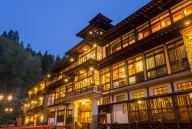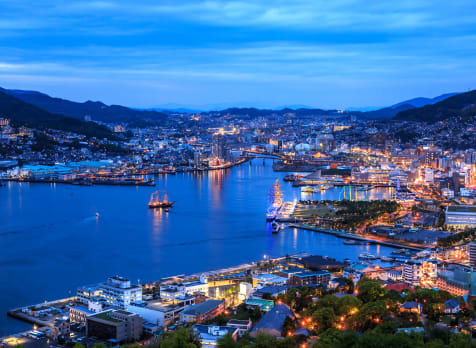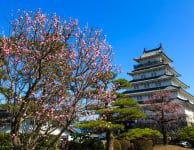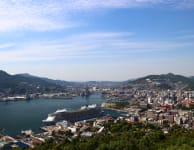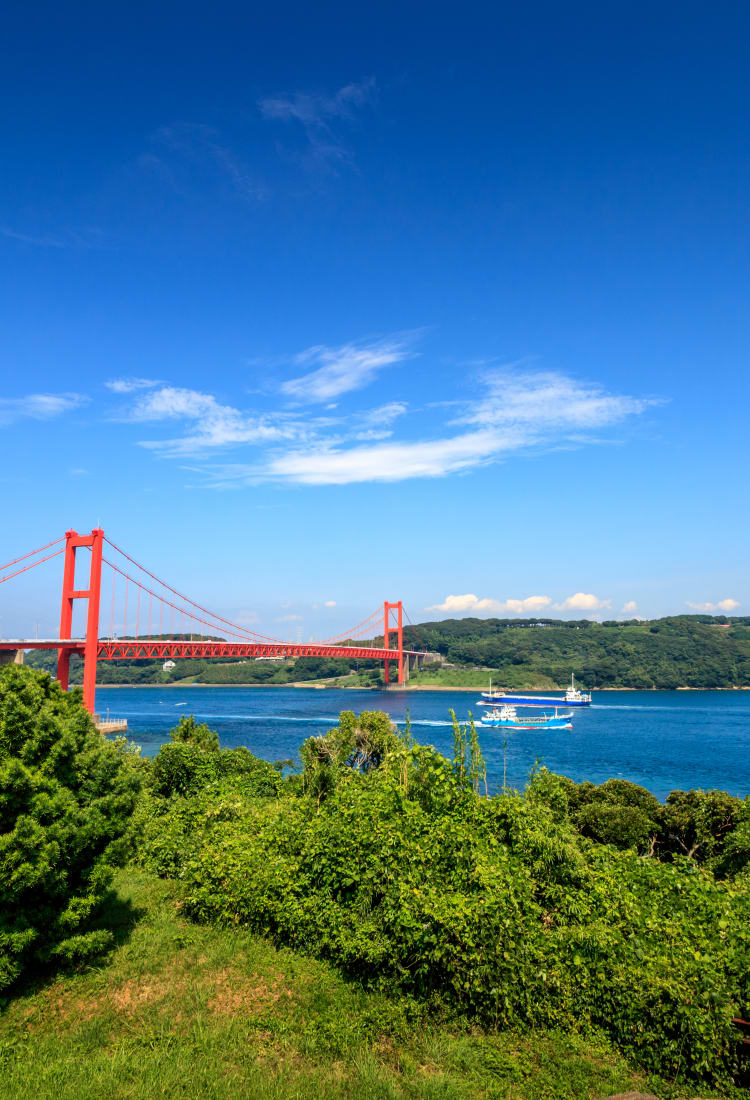

NAGASAKI Sasebo & Hirado Der Ursprung Japans erster Handelsverbindungen mit dem Westen, dessen starker Einfluss noch heute zu spüren ist
Der Ursprung Japans erster Handelsverbindungen mit dem Westen, dessen starker Einfluss noch heute zu spüren ist
Im Norden der Präfektur Nagasaki liegen Sasebo und Hirado, ein Paradies für Kultur- und Naturliebhaber.
Nicht verpassen
- Sasebo GoBanMai Einkaufszentrum: Beim Essen die Aussicht auf das schillernde Meer der Sasebo-Bucht genießen
- Kujukushima: Eine Fahrt an Bord eines Piratenschiffs mit atemberaubendem Blick über Sasebos berühmte Inseln
- Kujukushima Botanischer Garten Mori Kirara: Paviane, Katta, Ziegen, Schafe, Waschbären und Giraffen füttern
- Kujukushima Seaside Terrace Hotel & Spa Hanamizuki: Ein beliebter lokaler Onsen im nordwestlichen Teil Sasebos
Anfahrt
Sasebo ist mit den JR-Zügen von Fukuoka und Nagasaki aus erreichbar. Von dort ist Hirado eine rund 90-minütige Busfahrt entfernt.
Die JR-Limited-Express-Züge fahren ab dem Bahnhof Hakata in Fukuoka. Diese zweistündige Fahrt kostet rund 5000 Yen hin und zurück. Sie können auch die stündlich verkehrenden Züge der JR Seaside Line von Nagasaki aus nehmen. Eine 100-minütige Fahrt ist für 1680 Yen (einfach) erhältlich. Zwischen dem Flughafen Nagasaki und Sasebo fahren Flughafenbusse (75 Minuten, 1400 Yen einfach).
Sasebo
Sasebo, heute eine Stadt von internationaler Bedeutung, war einst ein kleines Fischerdorf, das bis kurz nach der Meiji-Zeit unter der Herrschaft des Hirado-Han stand.

Um diese Zeit erkundete der Admiral der Kaiserlich Japanischen Marine, Togo Heihachiro, Sasebo. Als er den geschützten Tiefwasserhafen, die nahegelegenen Kohlebergwerke und die geografische Nähe zu China und Korea sah, ergriff er die Initiative. 1889 erfolgte die Gründung des Marinebezirks Sasebo. Dieser Hafen spielte für die japanische Marine während des Ersten Japanisch-Chinesischen Kriegs und des Russisch-Japanischen Kriegs eine wichtige Rolle. Bis zum Ende des Zweiten Weltkriegs blieb er ein bedeutender Marinestützpunkt.
Das heutige Sasebo wurde am 1. April 1902 gegründet. Obwohl es von der Atombombe verschont blieb, trug Sasebo im Zuge des Zweiten Weltkriegs erheblichen Schaden davon.

Nach dem Ende des Zweiten Weltkriegs übernahm die United States Navy einen Teil des Sasebo-Stützpunkts und gründete die U.S. Fleet Activities Sasebo im Jahr 1946.
Aufgrund dieser amerikanischen Militärbasis können Besucher in Sasebo verschiedene Aspekte der amerikanischen Kultur kennenlernen. So entstand der heute berühmte und ebenso beliebte Sasebo-Burger. Weiche, teigige Brötchen, viel Salat und Soße – zusammen bilden sie den köstlichen Sasebo-Burger.
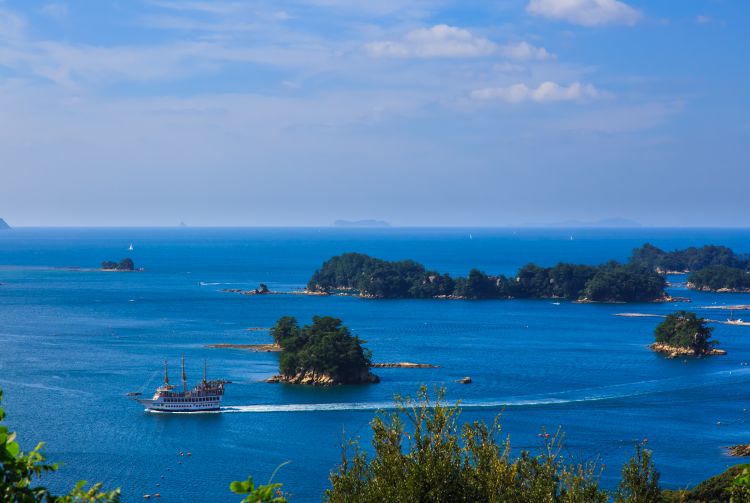
Hirado
Das durch eine rote Brücke mit der Hauptinsel Nagasaki verbundene Hirado liegt nur eine kurze Autofahrt von Sasebo entfernt. Hirado war bereits in der Nara-Zeit (710-794) der Anlaufhafen für Schiffe, die zwischen dem asiatischen Festland und Japan verkehrten.
Die 1609 erbaute holländische Handelsstation Hirado war Dreh- und Angelpunkt der Handelsaktivitäten. Sie kann heute noch besucht werden.
Ähnlich wie Sasebo stand Hirado unter starkem Einfluss ausländischer Besucher – vor allem den Niederländern. Hirado besitzt trotz allem noch immer seine eigene japanische Kultur, was es zu einem einzigartigen und faszinierenden Ort macht.
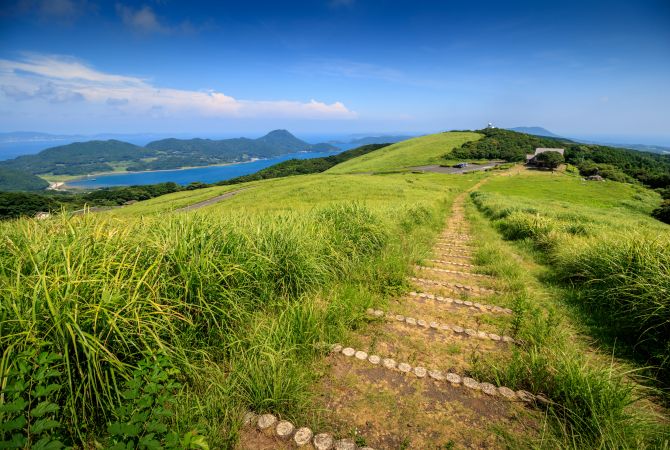
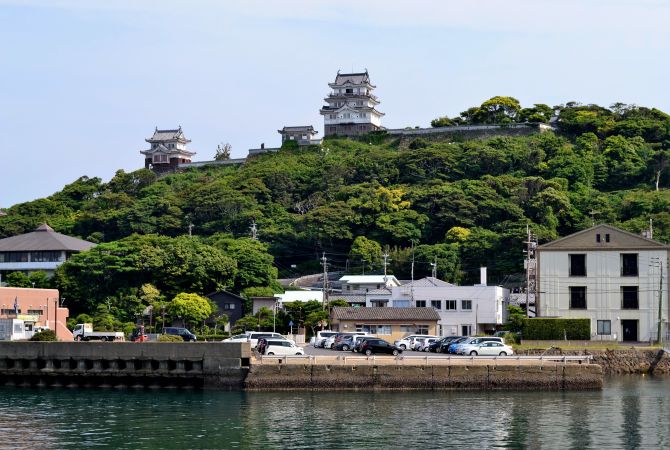


Neben der Handelsstation ist auch ein Besuch der Burg Hirado, dem einstigen Heim des Matsura-Clans, sehr empfehlenswert. Die Burg ist mit ihren herrlichen Blicken über den Hafen von Hirado und den alten Wald der Insel Kurokojima der perfekte Ort, um die Aussicht über Hirado zu genießen.
Auch für weniger Kulturinteressierte hält Hirado einiges bereit. Dank seiner zahlreichen, in ganz Japan bekannten Feste haben Besucher das ganze Jahr über die Möglichkeit, eines mitzuerleben. Das bemerkenswerteste unter ihnen ist vermutlich Tabira Jangara, ein Tanz zum Erntedankfest, in dem die Tänzer während der gesamten Darbietung ihre Gesichter verborgen halten. Aufgrund seiner Eleganz und kulturellen Bedeutung wurde er als Immaterielles Kulturgut Japans eingestuft.
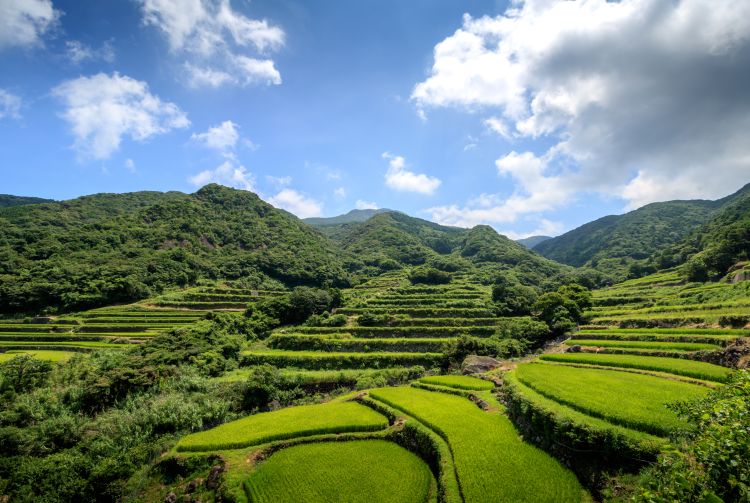
Für Naturliebhaber ist der Kawachi-toge-Pass ein wunderschöner Wanderweg mit einzigartigem Panoramablick über die Insel. An einem klaren Tag sind selbst Iki und Tsushima in der Ferne sichtbar. An einem sonnigen Tag wird eine Wanderung auf dem Kawachi-toge-Pass zu einem unvergesslichen Erlebnis.
Im Frühling findet in Hirado das Hirado-Tausend-Laternen-Fest statt. Das Fest zur Zelebrierung des Frühlingserwachens wird über zwei Tage im April veranstaltet. Zu dieser Zeit erstrahlt der Fumoji-Tempel im Licht der Stein- und Bambuslaternen. Jede Bambuslaterne wird von lokalen Kunsthandwerkern handgeschnitzt.
Mit Livemusik und Essensständen, die die Straßen säumen, erwacht die Stadt zum Leben. Wer dies nicht versäumen möchte, folgt einfach dem gewundenen gepflasterten Weg zum Tempel und taucht in die schöne, festliche Atmosphäre ein.
Ein früher Besuch zur Kirschblütenzeit lohnt sich, denn der Blick auf den 140 Jahre alten Sakura-Baumriesen Jigenzakura bleibt wahrlich in Erinnerung.































